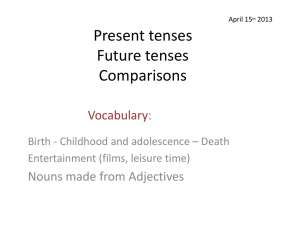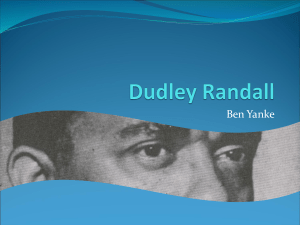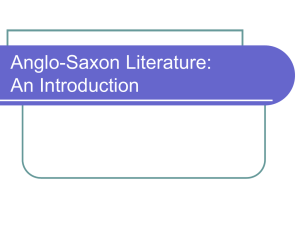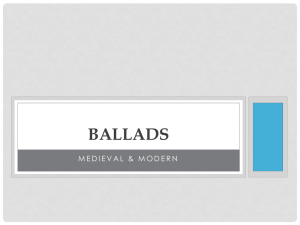The Bonny Swans
advertisement
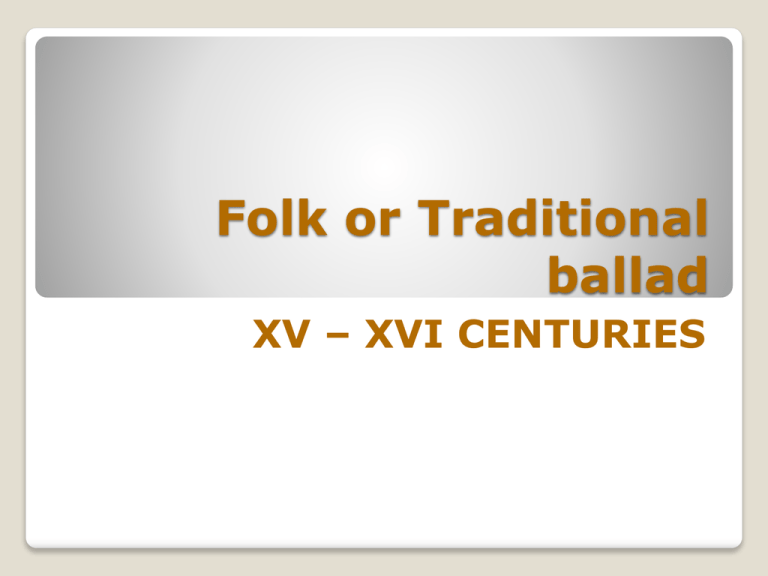
Folk or Traditional ballad XV – XVI CENTURIES 1. 2. 3. 4. Anonymous oral form which appears in the late Middle Ages throughout Europe. The oral mode makes the sound aspect very important for the ballad singer because: in order to memorize the ballad singers can only make use of sound devices such as: Rhyme (Dominant rhyme scheme ABCB or ABAB) Stress Pattern (Alternation of 4 stress lines and 3 stress lines) Repetition of keywords, phrases, whole lines and refrains Alliteration Themes Ballads are usually about love which may be: 1. erotic love, like in “Elfin Knight”, a ballad describing the courting between a married man and a girl, or 2. tragic love, like in “Lady Diamond”, where a kitchen boy is murdered by the king’s men because of his love for the king’s daughter. In the end the king’s daughter herself dies because of her sorrow for the loss of her true love; • magic and the supernatural are other typical themes of medieval ballads, see for example the ballad “Cruel sister” where we are told the story of a young girl who is killed by her sister for jealousy, but the crime is revealed on her wedding day by a magic harp made of the bones of the victim’s breast and three locks of her hair. The language of the Ballad a. a. c. Large use of simple syntactic structures (there are no subordinate clauses ) simple lexis mainly: monosyllabic words and concrete nouns of Anglo-Saxon origin. stock phrases (= a fixed set of words to describe someone or something: e.g. “fair pretty maid” is used in “Geordie” to refer to the female character; and “my milk-white horse” is used to refer to her horse). formulae (= Idea or concept expressed in identical or almost identical words: e.g. in the ballad “Geordie”, in the first two lines of the second stanza, to express desperate hurry Geordie’s wife says: “Come bridle me my milk-white horse, come bridle me my pony” Narrative technique The story is usually told by a narrator and through the voice of one of the characters involved in the story, this implies that dialogue is largely used. Authorship The origins of this anonymous poetic form are a mystery; Questions on Who exactly composed the ballads, or where and when these were composed remain unanswered; Something more may be said about the area where the English ballads were composed thanks to the fact that many of them contain a lot of words of Scottish origin, this makes us think that they were probably composed in an area on the border between England and Scotland. Audience Ballads were intended for the common people who lived in the villages, this is the reason why they mainly deal with events and situations in the everyday life of common people. Source of ballad texts The existence of many versions of the same ballad can be easily explained by the fact that ballads were mainly an oral form and even if ballad singers had exceptional memories, they did not aim at reproducing a text exactly, they simply aimed at telling old stories in the old traditional way. The Bonny Swans A (1) ______ there lived in the (2) ______ country A hey ho bonny o And he had (3) ______ one, two, three The swans (4) ______ so bonny o These daughters they (5) ______ by the river’s brim A hey ho bonny o The eldest (6) ______ the youngest in The swans swim so bonny o Oh sister, oh sister , pray (7) ______ me your hand With a hey ho a bonny o And I will give you (8) ______ and land the swans swim so bonny o I’ll give you neither hand nor (9) ______ with a hey ho a bonny o The Bonny Swans (10) ______ you give me your own true (11) ______ the swans swim so bonny o Sometimes she (12) ______ , sometimes she swam with a hey ho a bonny o (13) ______ she came to miller’s dam the swans swim so bonny o The miller’s daughter, (14) ______ in red with a hey ho a bonny o She went for some (15) ______ to make some bread the swans swim so bonny o Oh father, oh daddy, here swims a (16) ______ with a hey ho a bonny o It’s very like a gentle (17) ______ the swans swim so bonny o They placed her on the (18) ______ to dry The Bonny Swans with a hey ho a bonny o There came a harper (19) ______ by the swans swim so bonny o He made harp pins of her (20) ______ fair with a hey ho a bonny o He made harp (21) ______ of her golden hair the swans swim so bonny o He made a harp of her (22) ______ bone with a hey ho a bonny o And straight it began to (23) ______ alone the swans swim so bonny o He (24) ______ it to her father’s hall with a hey ho a bonny o And there was the (25) ______ , assembled all the swans swim so bonny o The Bonny Swans He (26) ______ the harp upon a stone with a hey ho a bonny o And straight it began to play alone the swans swim so bonny o And there does (27) ______ my father the King with a hey ho a bonny o And (28) ______ sit my mother the Queen the swans swim so bonny o And there does sit my (29) ______ Hugh with a hey ho a bonny o And by him (30) ______ , sweet and true the swans swim so bonny o And there does sit my (31) ______ sister, Anne with a hey ho a bonny o Who (32) ______ me for the sake of a man the swans swim so bonny o

